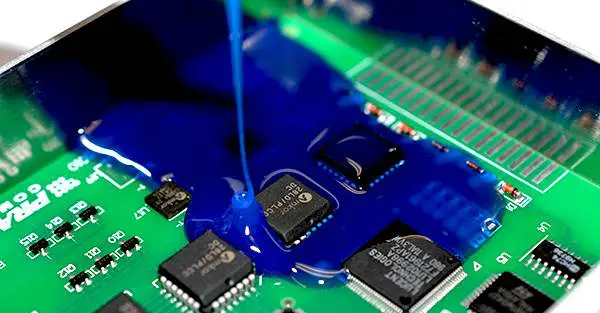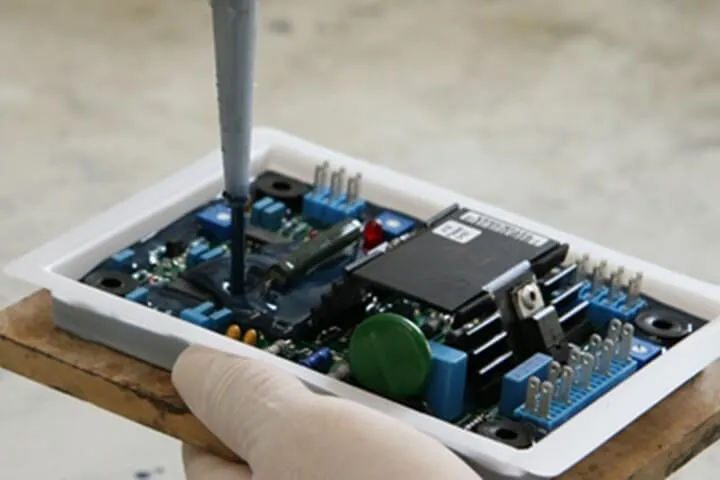Are you looking for ways to protect electronics from harsh conditions like shock, vibration, climatic conditions, and chemical aggression? Encapsulation and potting are proven techniques that safeguard sensitive electronic components from environmental and mechanical damage. In this blog, we dive deep into the top 8 benefits of encapsulation and potting electronics, offering practical insights for electrical engineers who need reliable solutions for their designs. Let’s explore how these methods can extend the life and performance of your electronic systems in demanding applications.
What Are Encapsulation and Potting in Electronics?
Before we jump into the benefits, let’s clarify what encapsulation and potting mean. Encapsulation involves enclosing electronic components in a protective material, often a resin or polymer, to shield them from external factors. Potting, a similar process, typically involves filling an entire enclosure or assembly with a compound like epoxy or silicone to provide comprehensive protection. Both techniques are widely used in industries like automotive, aerospace, and industrial automation to ensure electronics remain functional under extreme conditions.
For engineers, understanding these processes is critical when designing systems that must withstand shock, vibration, or exposure to chemical aggression. Now, let’s break down the eight key benefits of using encapsulation and potting to protect electronics.

1. Protection Against Shock and Impact
Electronics in rugged environments, such as automotive control units or industrial machinery, often face sudden shock and impact. Encapsulation and potting create a solid barrier around components, absorbing and distributing impact forces to prevent damage. For instance, in electric vehicles (EVs), battery management systems (BMS) are potted with epoxy to withstand collisions or rough handling during assembly. Studies show that potted electronics can endure impact forces up to 50% higher than unprotected counterparts, reducing the risk of cracked solder joints or broken components.
As an engineer, you can select potting compounds with specific hardness ratings (measured in Shore D, typically between 70-90 for rigid protection) to match the expected impact levels in your application. This ensures your designs remain reliable even in high-risk scenarios.
2. Resistance to Vibration
Constant vibration can loosen connections, wear down components, and cause micro-cracks in solder joints over time. Encapsulation and potting lock components in place, minimizing movement and dampening vibrational energy. This is especially important in aerospace applications, where electronics must endure vibrations from turbine engines or turbulent flights. For example, avionics systems often use silicone-based potting materials due to their excellent vibration-dampening properties, with damping coefficients often exceeding 0.5 at frequencies between 10-100 Hz.
When designing for environments with heavy vibration, consider potting materials with high elasticity to absorb oscillations. This can significantly extend the lifespan of your electronics, preventing costly failures in the field.

3. Shielding from Harsh Climatic Conditions
Exposure to extreme climatic conditions—such as high humidity, freezing temperatures, or intense heat—can degrade electronic performance. Encapsulation and potting seal components against moisture ingress and thermal stress, ensuring consistent operation. For instance, outdoor sensors in renewable energy systems, like solar inverters, are often potted with polyurethane compounds that maintain integrity from -40°C to 85°C, protecting against thermal expansion mismatches that could crack unprotected boards.
For engineers working on projects in diverse climates, selecting a potting material with a low coefficient of thermal expansion (CTE, typically below 50 ppm/°C) can prevent stress on components during temperature swings. This is a practical way to protect electronics from the elements.
4. Defense Against Chemical Aggression
Industrial environments often expose electronics to chemical aggression from solvents, oils, or corrosive gases. Encapsulation and potting create a barrier that prevents chemicals from reaching sensitive components, avoiding corrosion or short circuits. For example, in oil and gas exploration, control systems are potted with epoxy resins resistant to hydrocarbons, ensuring functionality even when exposed to aggressive fluids. Some compounds offer chemical resistance ratings against specific agents, with immersion tests showing no degradation after 1,000 hours of exposure.
As an engineer, you can consult material datasheets to choose potting compounds with proven resistance to the specific chemicals in your application, safeguarding your electronics from premature failure.
5. Enhanced Electrical Insulation
Encapsulation and potting materials, such as epoxy and silicone, provide excellent electrical insulation, preventing short circuits and arcing in high-voltage applications. This is crucial for power electronics, like inverters in electric vehicles, where dielectric strength is a priority. Many potting compounds offer dielectric strengths above 20 kV/mm, ensuring safe operation even under high electrical stress.
For designs involving high voltages, selecting a potting material with a high dielectric constant and low dissipation factor can improve insulation performance, reducing the risk of breakdowns and enhancing

6. Improved Thermal Management
Heat dissipation is a common challenge in electronics, especially in compact or high-power systems. Some potting compounds are formulated with thermally conductive fillers, like alumina or boron nitride, to transfer heat away from critical components. For instance, in LED lighting assemblies, thermally conductive potting materials with conductivity values of 1-2 W/m·K help maintain junction temperatures below 100°C, extending LED lifespan by up to 30%.
Engineers can optimize thermal management by pairing potting with heat sinks or selecting compounds with specific thermal conductivity ratings, ensuring components operate within safe temperature ranges.
7. Increased Mechanical Stability
Beyond protecting against external forces, encapsulation and potting enhance the mechanical stability of electronic assemblies. By encasing components in a rigid or semi-rigid material, these techniques prevent flexing or bending of circuit boards under stress. This is vital in applications like robotics, where repeated motion can strain connections. Potted assemblies often show a 40% reduction in mechanical failure rates compared to unprotected designs.
When designing for mechanical stability, consider the tensile strength of the potting material (often above 10 MPa for epoxies) to ensure it can withstand physical stress without cracking or deforming.
8. Long-Term Durability and Cost Savings
By combining protection against shock, vibration, climatic conditions, and chemical aggression, encapsulation and potting significantly extend the lifespan of electronics. This reduces the need for frequent repairs or replacements, saving costs in the long run. For example, in marine electronics, potted systems can operate reliably for over 10 years in salty, humid environments, compared to unprotected systems that may fail within 2-3 years.
For engineers, investing in high-quality potting solutions upfront can lower total cost of ownership, especially for critical applications where downtime is expensive. Always balance initial material costs with the expected lifespan and maintenance savings.
Choosing the Right Potting Material for Your Needs
Not all potting and encapsulation materials are created equal. Here’s a quick guide for engineers to select the right compound based on application needs:
- Epoxy Resins: Best for high mechanical strength and chemical aggression resistance. Ideal for industrial and automotive use.
- Silicone Compounds: Excellent for flexibility and vibration damping. Suited for aerospace and outdoor applications.
- Polyurethane: Offers a balance of flexibility and toughness, great for thermal cycling in varied climatic conditions.
Always test materials under simulated conditions (e.g., thermal shock tests or vibration tables) to ensure they meet your design requirements. Check for specifications like curing time, viscosity (typically 500-5,000 cP for easy application), and compatibility with your components.
Practical Tips for Implementing Encapsulation and Potting
Here are some actionable tips for engineers looking to protect electronics with encapsulation and potting:
- Prepare Components: Clean and dry all parts to ensure proper adhesion of the potting material, preventing voids or weak spots.
- Use Proper Mixing Ratios: Follow manufacturer guidelines for two-part compounds to achieve optimal curing and performance.
- Consider Dispensing Equipment: Automated dispensers can improve consistency for high-volume production, reducing air bubbles.
- Test for Stress: Simulate real-world conditions like shock or extreme climatic conditions to validate your potting solution before deployment.
Conclusion: Why Encapsulation and Potting Are Essential for Electronics Protection
Encapsulation and potting offer unmatched benefits for engineers aiming to protect electronics from shock, vibration, climatic conditions, and chemical aggression. From enhancing mechanical stability to improving thermal management, these techniques ensure your designs perform reliably in the toughest environments. Whether you’re working on automotive systems, aerospace avionics, or industrial controls, investing in the right potting solution can save time, reduce costs, and boost system durability.
 ALLPCB
ALLPCB







